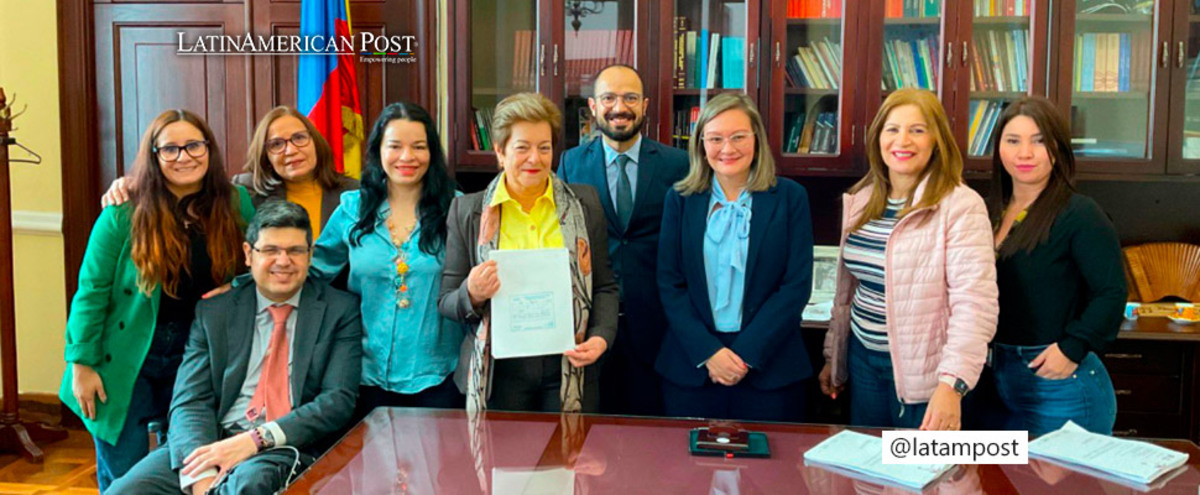Colombia: Petro Government Once Again Settles in Congress The Labor Reform
The Colombian Minister of Labor, Gloria Inés Ramírez, filed this Thursday in the House of Representatives, surprisingly and unscheduled, a new labor reform.

Photo: TW-MinTrabajoCol
LatinAmerican Post | EFE
Listen to this article
Leer en español: Colombia: Gobierno Petro radica de nuevo en el Congreso la reforma laboral
This happens after the reform sank in the last legislative period. This was due to the fact that the reform failed to advance in its first debate due to lack of a quorum. Now, the Petro Government and María Fernanda Carrascal, rapporteur for the reform, will make a second attempt to advance the labor reform, an issue that was widely discussed more than a year ago during the electoral campaign.
"The labor reform proposal was once again filed in Congress by the Minister of Labor. It is a labor reform to recover labor rights," said the representative to the Chamber Alfredo Mondragón, of the ruling Pacto Histórico coalition, in a video published on his social networks.
He added: "We are going to insist to the country, even to the businessmen, that what is best for them are workers with new income."
Why did it sank in the first place?
The labor reform collapsed last June because it could not pass the first debate in the Seventh Committee of the House of Representatives due to lack of a quorum. For this reason, the Government decided to present the project again this Thursday.
What challenges does the reform face?
According to the EFE news agency, this reform seeks to face several challenges, among which are:
- labor informality
- Instability
- lowering the price of compensation for unjustified dismissals
- outsourcing and labor intermediation
- the elimination of nightly surcharges
- the reduction of the surcharge for work on Sundays and holidays
- the de-labouring of the apprenticeship contract.
It also intends to establish solutions to challenges related to new forms of contracting and special protection measures related to digital platforms or remote work, as well as jobs related to agriculture, sports and migration, among others.
What does the reform propose?
According to the Government, the labor reform has a differential approach that will take into account skills, limitations and tasks that up to now have not been taken into account by previous reforms and previous governments. Among these approaches and new criteria are:
- gender gaps
- the care economy
- the establishment of flexible hours
- relocated work through the use of technologies
- care responsibilities
- paid domestic work
- violence, discrimination and harassment at work
- social inclusion for people with disabilities.
To avoid a second collapse of the reform, the Government has made some changes in the document presented in the previous semester. Thus, this new reform reaches Congress with 14 more articles and some modifications regarding remote work and digital platform workers. It is expected that this reform can advance through congressional debates with greater agility this time.




